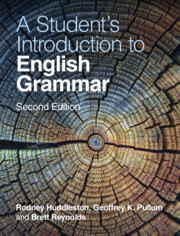

A subordinate clause is one embedded somewhere within another clause. The clause immediately containing it is called its matrix clause and may or may not be the main clause of the whole sentence. Subordinate clauses often differ in their internal structure from main clauses. There are three main types: relative, comparative, and content clauses, the last being the default type.
Relative clauses often include a relative word or a subordinator in marker function and have an anaphoric relation between an element in the clause and one in a containing clause. Often a missing phrase determines the anaphoric relationship. Comparative clauses mostly function as complements to the prepositions ‘than’ or ‘as’ and lack a phrase found in a main declarative clause.
Content clauses may be introduced by a subordinator, such as ‘that’ or ‘whether’, but otherwise differ less radically from main clauses, and indeed are often structurally identical with them. Content clauses function cheifly as complements within the larger construction. Like main clauses, they have declarative, interrogative, and exclamative subtypes. Sometimes, the structure of a subordinate clause is ambiguous between two types.